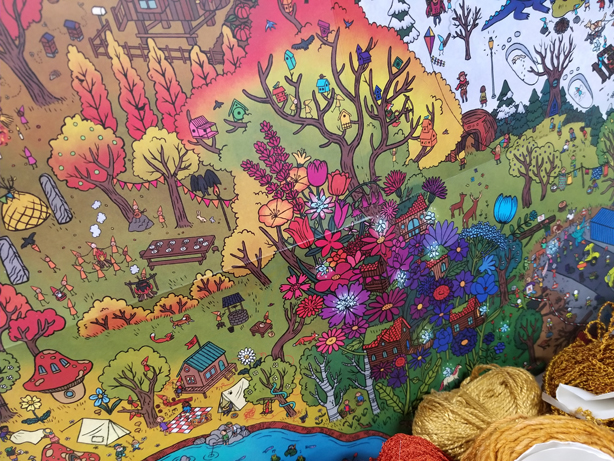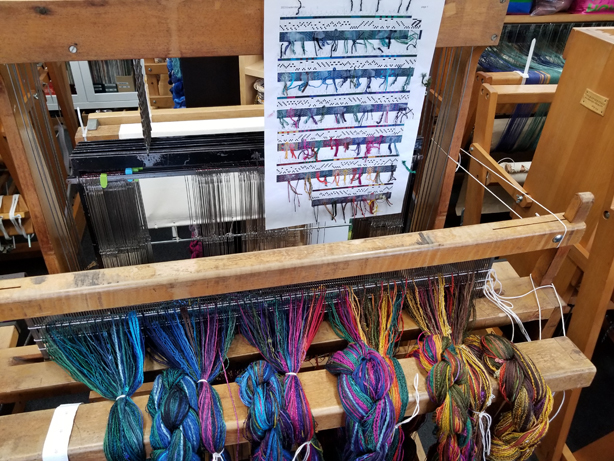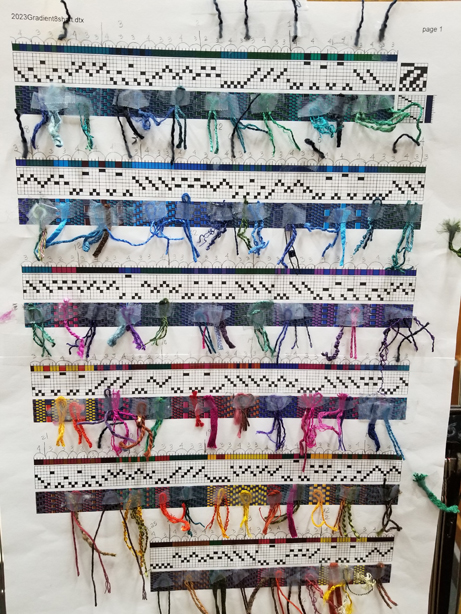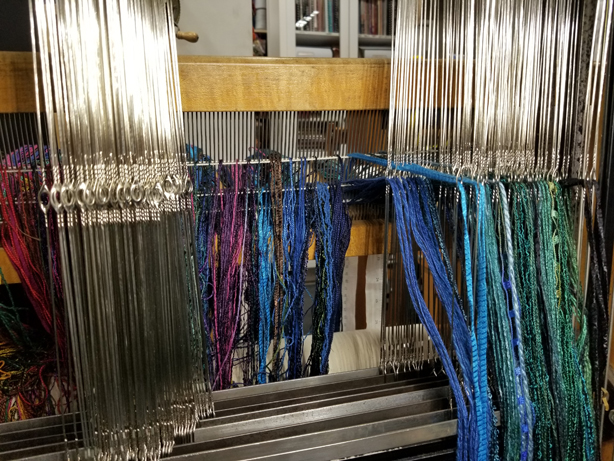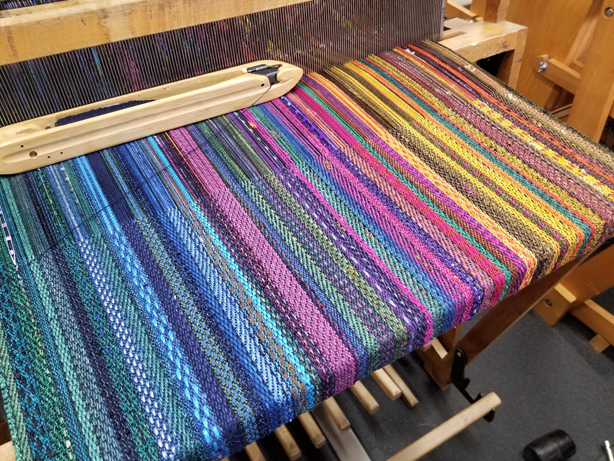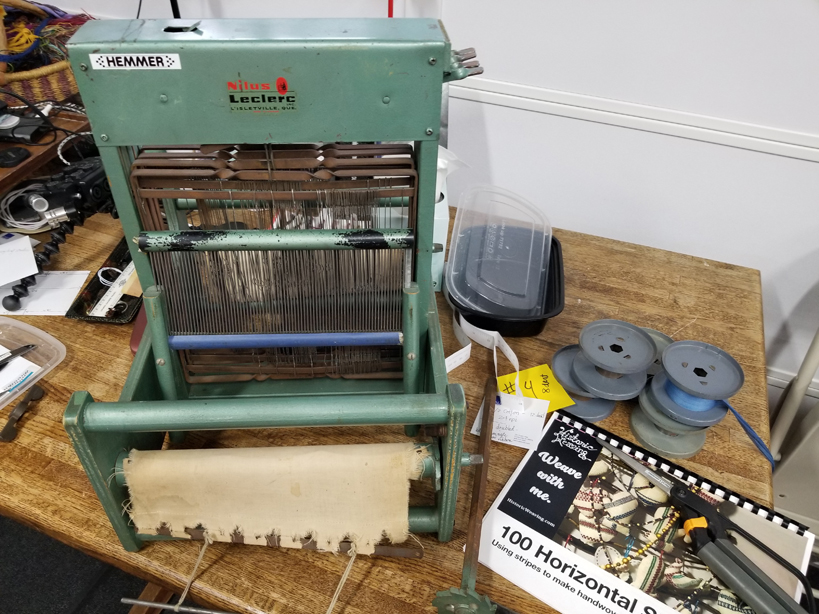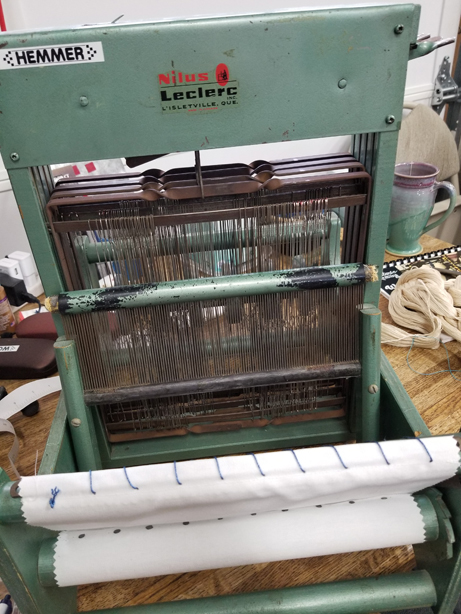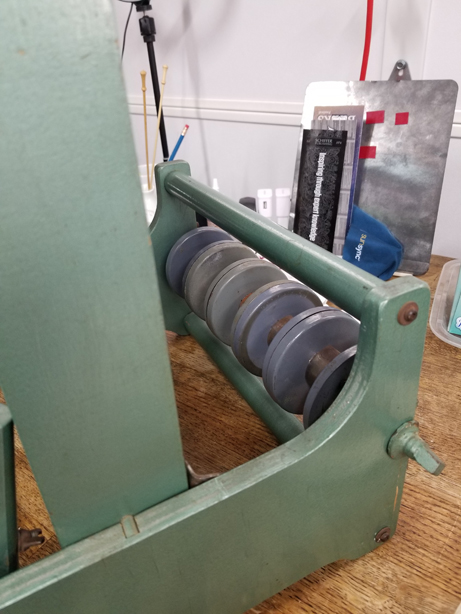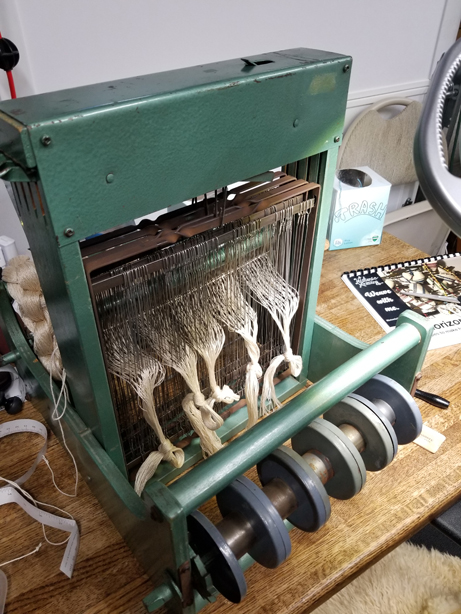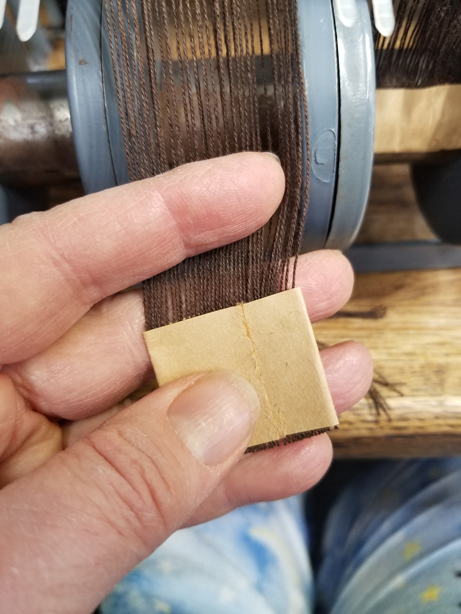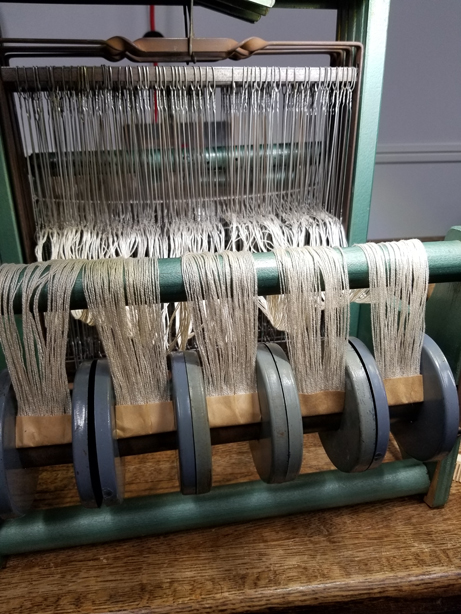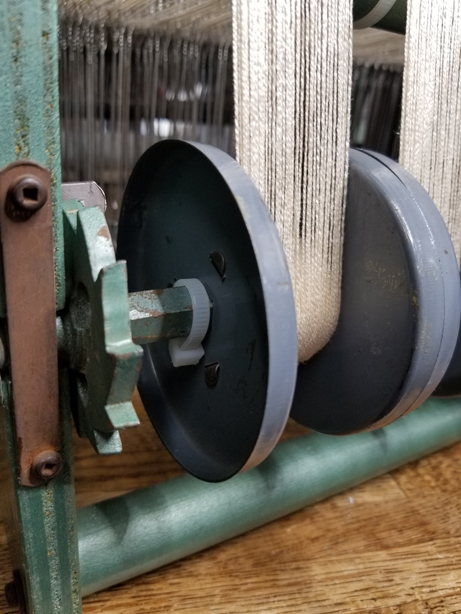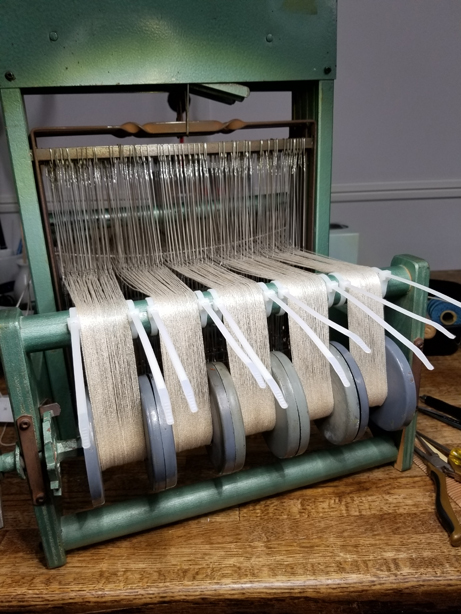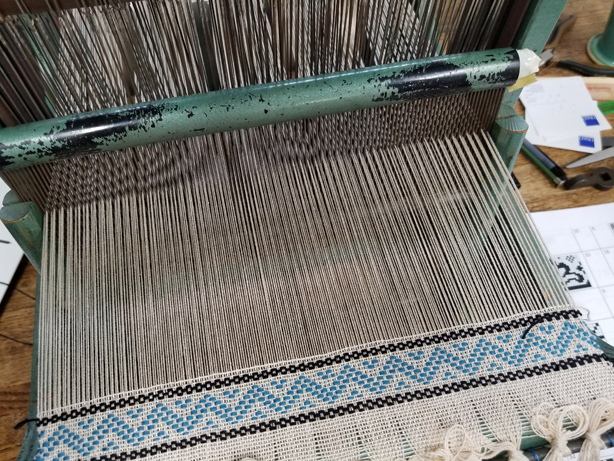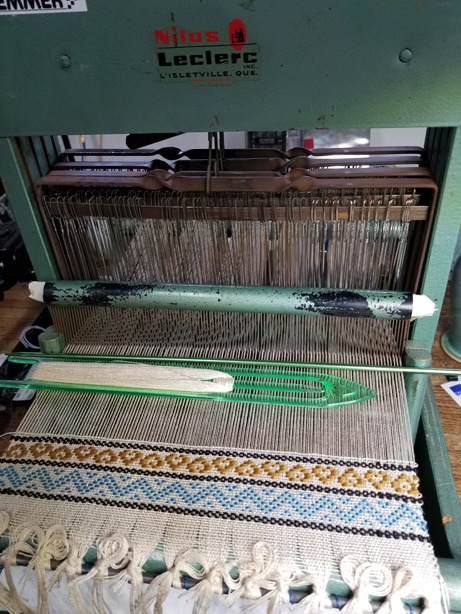When my kids were young, a dark time in my life because raising children, especially my children, was really really challenging, I found myself in one of the lowest points in my life. I was probably in a deep depression, not something that is a normal affair for me. I remember hearing about a book, or maybe my beloved Mother-in-Law gave it to me, by Sarah Ban Breathnach, called The Simple Abundance Journal of Gratitude. I have five of them on my shelf, and each one starts in January, with a few lines for each day of the year. Inspirational quotes are scattered throughout the book. The copyright is 1996, so that would be about when my kids were just starting school. Those were tough times. I was taught long ago, how important it is to have gratitude, for anything, even if it is just that you woke up in the morning. Desperate times call for desperate threads to hang on to, and I latched onto those little books, for what looks like five years straight, and I dutifully wrote in them five things I was grateful for each day. There are other journals on the shelf which came after, because I actually got into the habit of journaling, a healthy way of putting thoughts on paper and celebrating the good stuff and documenting the tough times. I haven’t ever sat down to reread what I wrote back then, I’m not sure I can or should. But eventually, as my kids grew and I survived multiple traumas, like breast cancer in 2002, I found that the journals I wrote to be more limiting. I wanted to add pictures, and information of where I was traveling, and teaching. I wanted to add what I was working on in the studio, and what my students did.
In 2008, I read an article by tech wizard Syne Mitchell, a column more specifically, that she wrote for Handwoven Magazine, talking about how weavers should embrace this new technology and start a blog. She explained how to do it on eBlogger, and I thought, I can do this. It would allow me to write, journal style, and add pictures, and links and keep a digital journal that if someone actually wanted to read, they could. My tech husband saw what I did, and after a couple of posts told me that I needed to switch to Word Press, and he moved everything I’d done to that platform, much to my dismay, since Word Press at the time is not particularly user friendly, and still isn’t. It just gets more and more complicated. But that was 2008.
I have written more than 900 posts at this point and I have gone back and read and reread many of my posts. I am shocked, surprised, dismayed and thrilled at all I’ve accomplished over the last 15 years of my life. If nothing else the visuals are stunning.
Lots of people read my blog, but that’s not why I write them. I actually don’t care if they are ever read, though I will say I always enjoy getting comments, because I learn a lot and know that people care and appreciate the share. I continue to write the blogs, even though blogging is so last decade, because I like to write, and journaling keeps reminding me of what’s important, or what was important to me at the time I wrote each post.
Today I reached a huge goal. It was maybe a silly goal but it is still an important one to me. In my last post I talked about all the looms I have, and how it became an obsession over the last year to get warps on all of them. A personal challenge? I had one remaining Tools of the Trade table loom in the back corner of the garage/studio that I had purchased used from Eugene Textiles in Oregon and paid to have it shipped across the country. I never got around to cleaning it up and replacing cords, apron strings, and giving it a good wipe down with Howard’s Feed and Wax. At least the heddles all canted in the same direction though I’d need to add a few hundred! So I spent a day, earlier in the week, giving this last Tools of the Trade loom in my collection, a solid refurbishment, and it was ready for a warp. My daughter named all of our looms, because frankly it is the only way we can keep track of the 50+ looms in this studio. She referenced Star Trek for many of them, and this one is named “Kim“. Ensign Harry Kim from Voyager…
In my last post, I mentioned I got the idea of Rep Weave, which I had only played around with briefly many years ago in a guild challenge, and looked through all the books I had on the subject. I found a project that I could base my design on, and started looking at yarns.
I found this cone of vintage Silk City Fibers Contessa, a 75% rayon, 15% silk yarn that at the time, (and still is) my favorite yarn to work with. It was discontinued a long time ago, but because I live near Silk City, when it use to be headquartered in Paterson, guild members in my area acquired a lot of it, and I frequently find the mother lode in estate sales. So I have a decent stash, especially in natural which I dye frequently. This particular cone was one of their beloved variegateds, called Roman Holiday. Cute name…
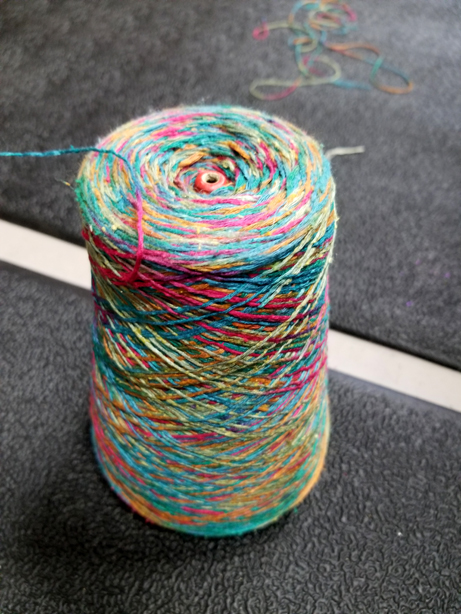
I spent a ridiculous amount of time trying to see if there was some sort of repeat in the dye coloration, and there sort of was. It seemed the colors repeated themselves every three yards give or take.
When I want to line up colors in a variegated yarn, I have to wind the warp in a circular fashion. You can’t do that on a warping mill. Because I was going to do a short warp, 3 yards, I used my small warping board, and tied it to a music stand. Perfect height.
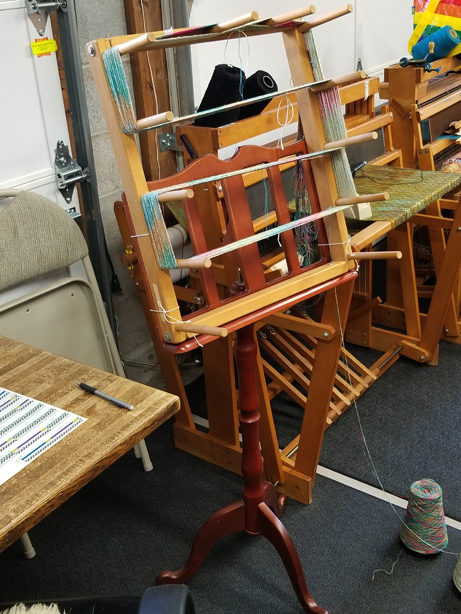
I went around the board, and up the side, taping off the end of the color sequence so I could start around the board again. As a side, I’m giving a lecture in warping the loom from the front to the back, a method I’ve used since the early 80’s with tremendous success, for MAFA Virtual, a remote conference in July. The great thing about this conference is you can sign up for as many sessions as you’d like since they will all be recorded and what you can’t watch at that moment, you can watch later. I believe sign ups have just begun. Anyway, I’m going to discuss what I just described in more detail in that lecture.
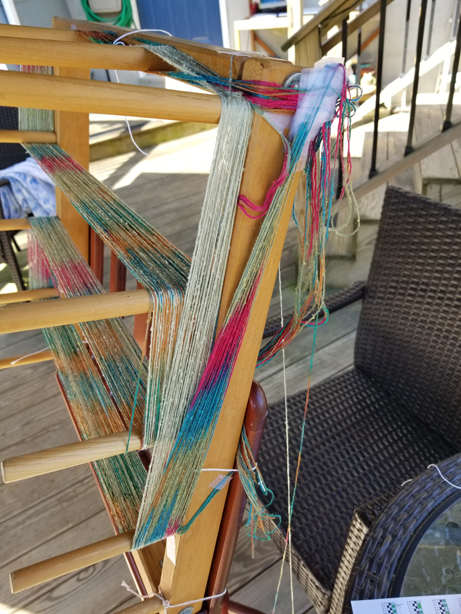
The other day, it was just gloriously warm and sunny and I took my warping board, tied to the music stand, and all the yarn I chose and hauled it out the back door to the studio onto the deck, where I stood, listening to the busy birds and the waterfall in the pond, and kept on winding.
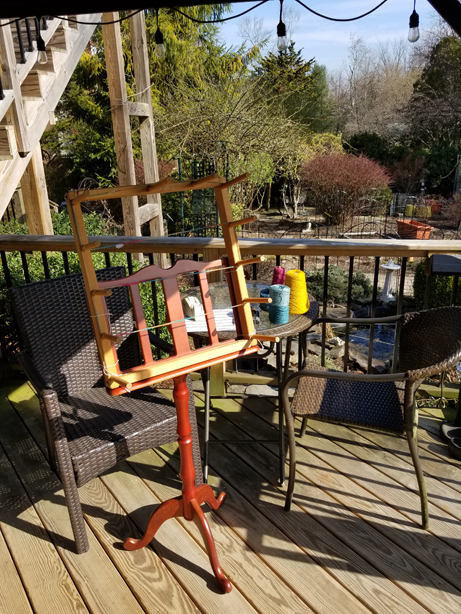
Eventually I wound all the chains I needed for this very complicated warp. I couldn’t get the colors to line up as perfectly as I hoped, especially after there was a break in the yarn and a large knot, and things seemed to go haywire after that. But I persevered and got all the chains wound.
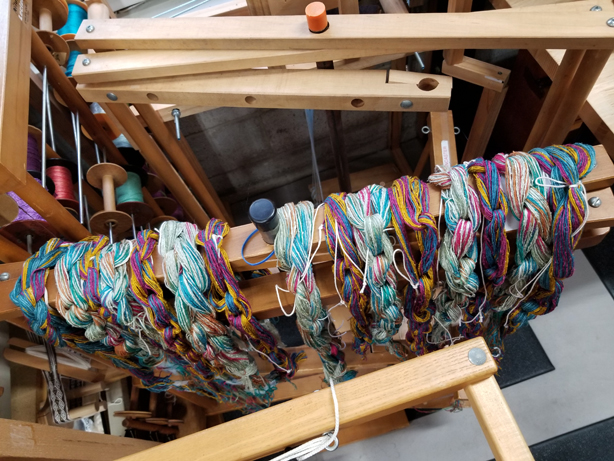
After rehabbing “Kim” I started to sley the chains, four ends in a dent, in an 8 dent reed. I tied the reed into levels, like I always do when warping front to back. Again, I’ll talk a lot about this in the lecture for MAFA Virtual.
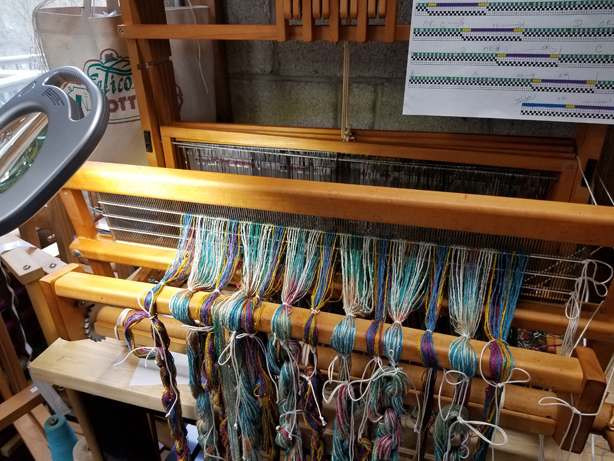
I flipped the loom around, dropped out the whole back of the loom, which I can do on the Tools of the Trade table looms, and started to thread. This is a pretty dense warp at 32 ends per inch, basically the blocks are only on two shafts each, so I was sort of sweating whether this loom could handle such a dense warp and still give me a shed…
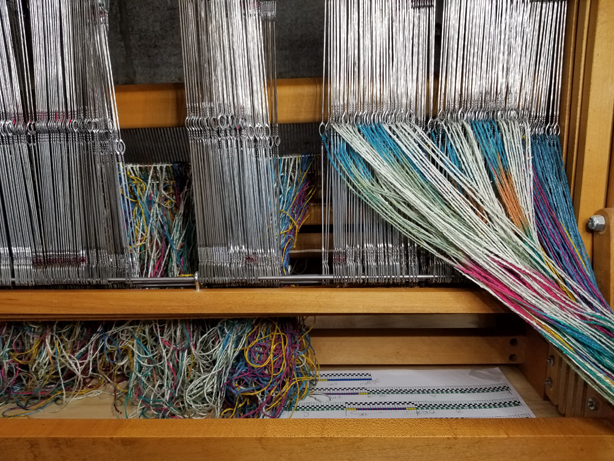
Then it was time to beam. The colors really started to sing, and I got the dense warp onto the warp beam in record time, since it was only three yards.
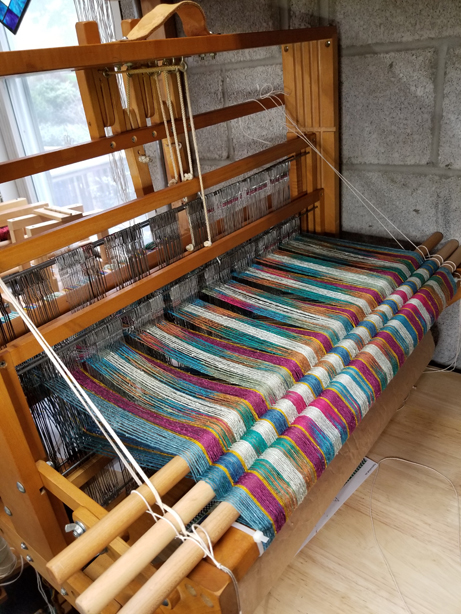
And then the moment of truth. Yes, I was able to get a shed, though I have to push down the shafts that want to ride up together, on a table loom that isn’t really an issue. Takes about 2 seconds. I chose a thick and a thin weft, typical in Rep, and started in on the pattern.
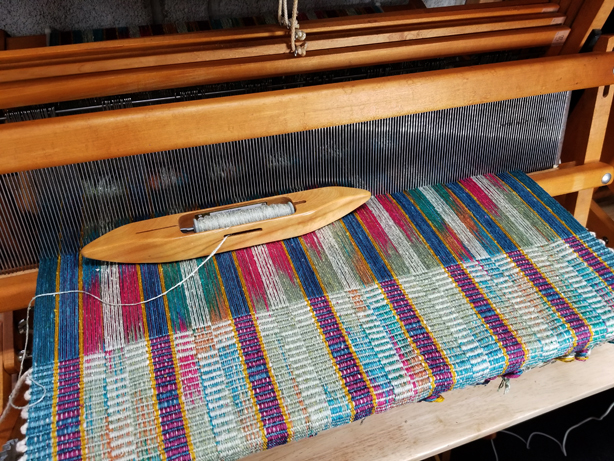
I could have sett this closer, probably should have, but I was really afraid the loom couldn’t handle it, and because I have large eye inserted eye heddles, they just don’t nest like a flat steel heddle, which I never had for any of my Tools of the Trade looms. They weren’t designed for that type of heddle. But it is pretty cool anyway, and more to the point, I’m learning a lot. And that’s why I do what I’m doing.
Meanwhile, for no one’s benefit but mine, for the rest of this post and the next couple of posts to follow, I want to document that at this point in time, I’ve warped all the looms that are mine to warp. Since most of them are mine, that’s a lot of looms.
So in no particular order, I’ll start with my first loom back in 1978, Tools of the Trade, 8 shaft, 45″ wide, with a double back beam and sectional option. When I bought it I had no idea what any of that stuff was, but I bought it anyway figuring I’d grow into it. I did and then some. Because this was my first loom, purchased directly from Tools of the Trade in Fairhaven, VT, the looms is called “Fairhaven“. All of the Tools of the Trade large floor looms were numbered. This was one of the first hundred, #94. At the moment it has something like 4 yards of mohair, desperately trying to use the last of the stash, in a plain weave, 6 epi. I blogged about that here.
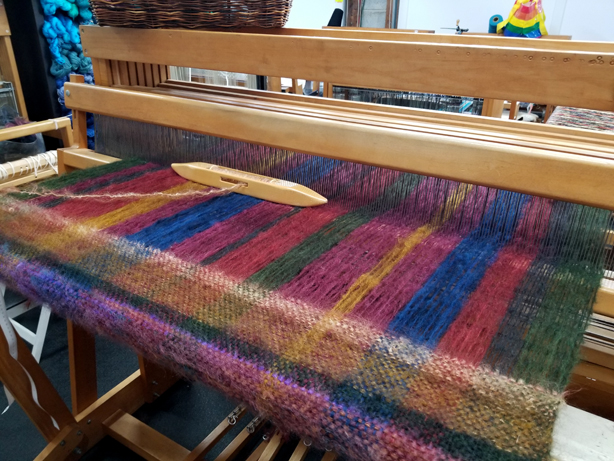
After I purchased that loom, I realized I needed a second, for demos, workshops, and scarves that would match my regular production fabric, because I was full on into production weaving and beginning to do craft fairs. I bought the identical loom, but 25″ wide, so it could be put in a van and brought to a craft fair. I called this one “Fairhaven Junior“. On this loom, I have an 8 shaft project, from WEBS, documented in a blog post here.
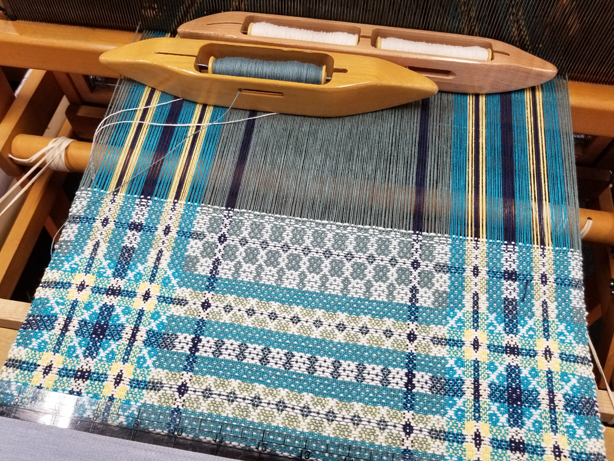
My mother in law, who was a bit of a weaver among other things, (primarily bobbin lace) wanted a loom for her apartment in Wilton, CT. I ordered her a 25″ 4 shaft floor loom, also from Tools of the Trade, somewhere in the mid 1980’s, and when she got too old to weave, she gave it back to me. I just warped it earlier in the week with the cotton runner commission I talked about in my last post. I called this loom “Wilton“.

Next to it is its twin sister, that my daughter and I drove to Atlantic City or somewhere near there to pick up when we saw an ad that it was available. I don’t remember who owned it, but it was really for her use because at the time, she had moved out and taken “Fairhaven” with her and wanted a smaller one for workshops and demos. She named it “Porter“, something to do with it being from a port city in coastal NJ . On the loom is a cotton warp and she is cutting up her late father’s interesting shirts and assorted clothing and weaving one long rag rug art project on it.
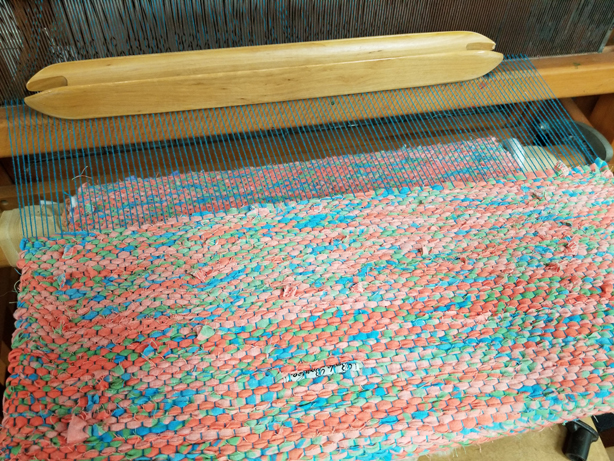
She drove to Massachusetts a few years ago to pick up a vintage Tools of the Trade, meaning really early, predating my 1978 loom, 4 shaft 32″ wide. Somewhere along the way, someone had a second warp beam kit in their closet for a 32″ Tools of the Trade loom, which they shipped to me for free. I sat on it and realized that it would fit this loom, so Brianna drilled for it and I named this “Snyder” because I think that’s the name of the women I purchased it from. Right now I have a ten yard ice dyed warp on it, which has been on there a while, and I think I’m weaving this in a crackle structure. I blogged about it here.
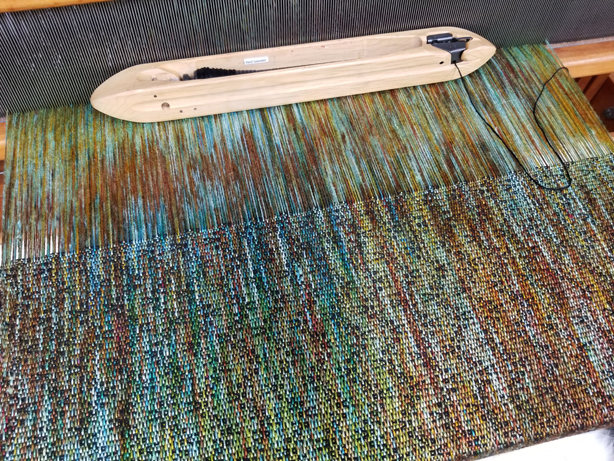
Mother’s Day 2021 Brianna loaded up the trailer and drove 4-5 hours to Rochester NY to pick up the largest loom in the studio, which was a 12 shaft Tools of the Trade loom, 54″ wide. # 486 one of the last looms he made. We called this loom “The Duchess“. It is almost too much loom for me, though I did weave my 12 shaft combination weave fabric for my walking vest which was part of the collection I sent for the Convergence fashion show in Knoxville, TN, summer of 2022. Brianna now has a very cool 12-shaft dishtowel run of fabric, in rainbow colors, based on a 10 shaft draft from a Robin and Russ collection we purchased from a weaver’s estate sale. I find the logo for Robin and Russ a bit disconcerting, but the content and swatches in the four binders we have is invaluable.
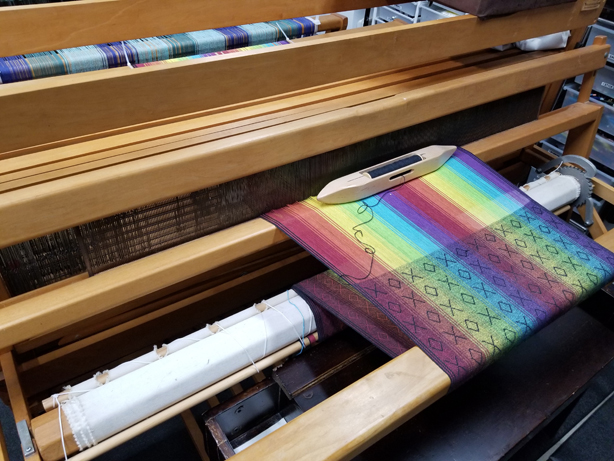
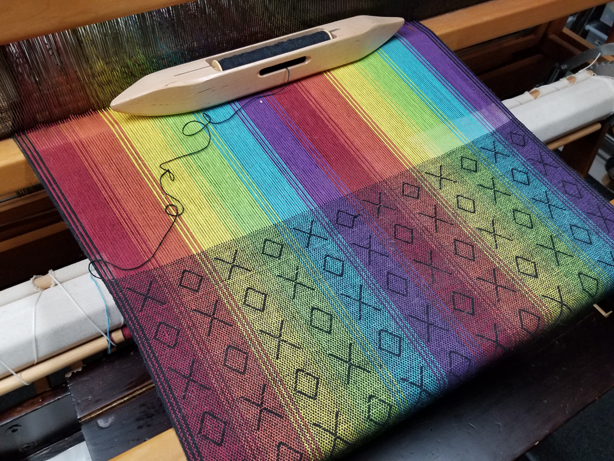
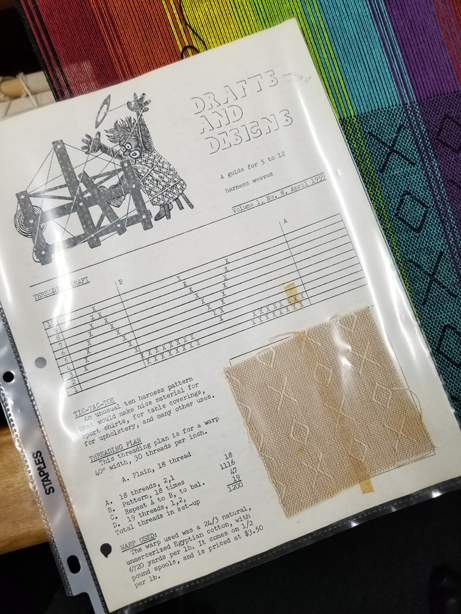
Behind it sits a sister loom to my original “Fairhaven“. This loom is also an 8 shaft, 45” loom with a single warp beam, # 246, named “Princeton” because my daughter answered an ad that had this loom for sale, and she went to Princeton, with a tool kit, paid the woman the couple hundred dollars she was asking, and completely dismantled the loom so it would fit in the back of a Rav4 as a pile of lumber. She then reassembled the loom in her second floor apartment, next to “Fairhaven” which I had given her when she moved out. Of course all the looms came back when she moved back home, along with her dog and cat. The rest is history. On it is an oversized overshot pattern which my daughter says is from Strickler’s book of 8 shaft patterns.
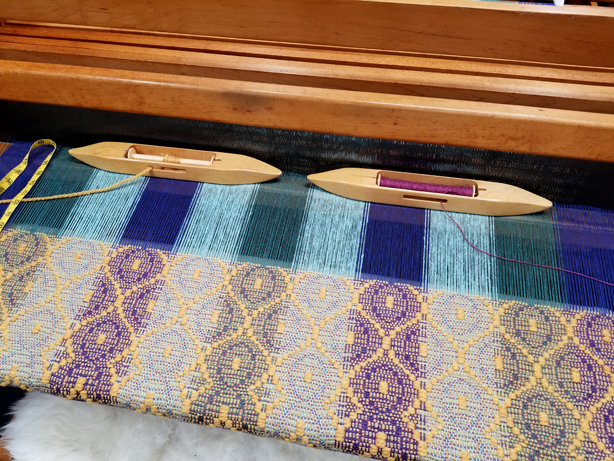
A number of years ago, knowing I’d be downsizing at some point (hahahaha) and feeling that my 45″ “Fairhaven” was getting to be too much loom for me and that I’d be eventually giving it to my daughter, I found a loom for sale outside of D.C. that was identical except it was only 36″ wide. It is one of my favorite looms in the studio. It fits my aging body well. It is 8 shaft and has a second warp beam. # 273. We call this one “Princess“. On it right now is a chenille ‘color and weave’ on only 4 of the 8 shafts, but I needed the width of the loom. I blogged about it here. I have no idea how many yards I put on it. I’d have to go back and look at my notes. (It was 8 yards)
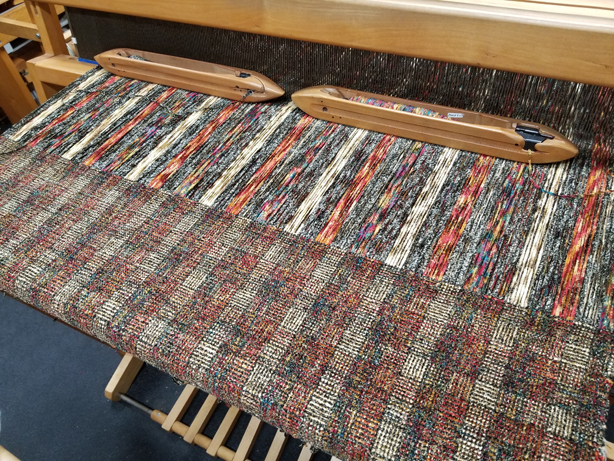
That leaves the six Tools of the Trade Table looms. I’ll talk about them next time, though one of them, “Kim” was described above.
Stay tuned… Lots more loom fun to come…
